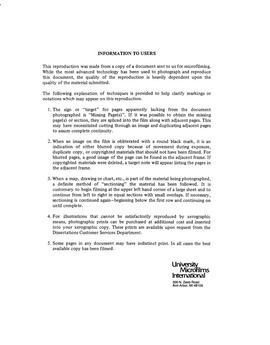| dc.contributor.author | Jung, Byung Il, | en_US |
| dc.date.accessioned | 2013-08-16T12:29:19Z | |
| dc.date.available | 2013-08-16T12:29:19Z | |
| dc.date.issued | 1984 | en_US |
| dc.identifier.uri | https://hdl.handle.net/11244/5316 | |
| dc.description.abstract | The findings of this study indicate that the extensive rural orientation of the Oklahoma garment industry was a spatial manifestation of a search for sufficient female labor that could be hired at reasonable costs. The industry required that a female labor force of specific skill level and earnings capacity be considered as a place specific location factor. The Oklahoma garment industry, made possible by the presence of large pools of female labor in rural areas, is not expected to grow in the 1980s due to the smaller labor forces available in rural counties of the state. | en_US |
| dc.description.abstract | This study was an effort to evaluate female labor supplies as determinants of location patterns of the garment industry using Oklahoma as an exemplary study area. Historically, classical industrial location theorists have been more concerned with labor costs than supplies as labor is generally regarded as geographically mobile and replaceable by capital. However, labor is considered place specific in the garment industry because of its work force, traditionally characterized by minimal skill levels, low wages, and female workers. | en_US |
| dc.format.extent | vii, 141 leaves : | en_US |
| dc.publisher | The University of Oklahoma. | en_US |
| dc.subject | Women Employment. | en_US |
| dc.subject | Geography. | en_US |
| dc.subject | Clothing workers. | en_US |
| dc.title | Plant locations and female labor resources : | en_US |
| dc.type | Thesis | en_US |
| dc.thesis.degree | Ph.D. | en_US |
| dc.note | Source: Dissertation Abstracts International, Volume: 46-01, Section: A, page: 0232. | en_US |
| ou.identifier | (UMI)AAI8505909 | en_US |
| ou.group | College of Atmospheric & Geographic Sciences::Department of Geography and Environmental Sustainability | |
